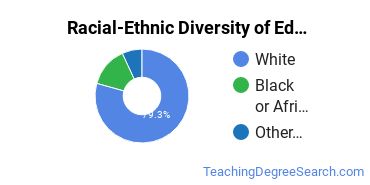Education/Teaching of the Gifted & Talented at Lindenwood University
If you are interested in studying education/teaching of the gifted & talented, you may want to check out the program at Lindenwood University. The following information will help you decide if it is a good fit for you.Lindenwood University is located in Saint Charles, Missouri and has a total student population of 7,382.
Want to know more about the career opportunities in this field? Check out the Careers in Education/Teaching of the Gifted & Talented section at the bottom of this page.
Lindenwood University Education/Teaching of the Gifted & Talented Degrees Available
- Master’s Degree in Education/Teaching of the Gifted and Talented
Online Classes Are Available at Lindenwood University
If you are a working student or have a busy schedule, you may want to consider taking online classes. While these classes used to be mostly populated by returning adults, more and more traditional students are turning to this option.
Are you one of the many who prefer to take online classes? Lindenwood University offers distance education options for education/teaching of the gifted and talented at the following degree levels:
- Master’s Degree
Lindenwood University Education/Teaching of the Gifted & Talented Rankings
Education/Teaching of the Gifted and Talented Student Demographics at Lindenwood University
Take a look at the following statistics related to the make-up of the education/teaching of the gifted and talented majors at Lindenwood University.
Lindenwood University Education/Teaching of the Gifted & Talented Master’s Program

Of the students who received a education/teaching of the gifted and talented master's degree from Lindenwood University, 91% were white. This is above average for this degree on the natiowide level.
The following table and chart show the race/ethnicity for students who recently graduated from Lindenwood University with a master's in education/teaching of the gifted and talented.

| Race/Ethnicity | Number of Students |
|---|---|
| Asian | 0 |
| Black or African American | 1 |
| Hispanic or Latino | 0 |
| White | 10 |
| International Students | 0 |
| Other Races/Ethnicities | 0 |
Related Majors
References
*The racial-ethnic minorities count is calculated by taking the total number of students and subtracting white students, international students, and students whose race/ethnicity was unknown. This number is then divided by the total number of students at the school to obtain the racial-ethnic minorities percentage.
- College Factual
- National Center for Education Statistics
- O*NET Online
- Image Credit: By Bhockey10 under License
More about our data sources and methodologies.
